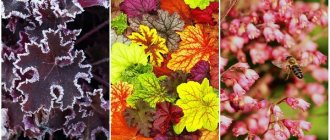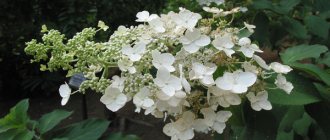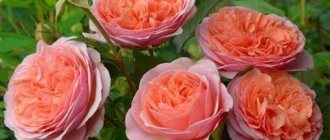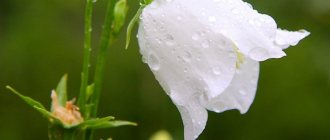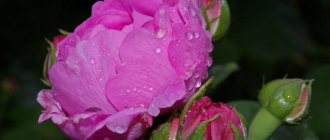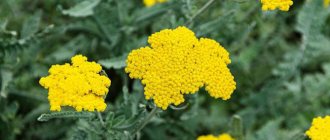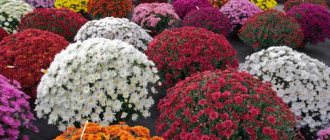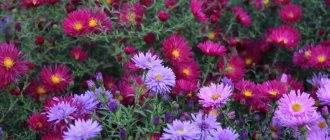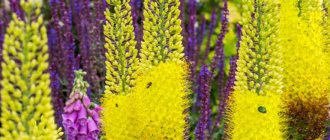00 : 00
00 : 00
Listen to the article “Daffodils care in the open ground”
— — 19 : 37
Javascript Css Php Jquery Ajax
Narcissus is a monocotyledonous plant from the Amaryllis family. The peculiarity of the flower is that it is considered one of the earliest to bloom in spring. At the moment, about 60 different types of daffodils are known. Most of them are widely found in temperate climates, but throughout the world. Of these 60 species, gardeners use about 25. In addition, there are a dozen more hybrid daffodils.
In ancient times, this plant was given almost ritual significance. Moreover, among different peoples, narcissus had different meanings. For example, in the East, the narcissus was called nargis, and it was compared only with the beauty of the eyes of the beloved woman. In Europe, a narcissist is considered a declaration of love to this day, especially in Italy.
An exception is the narcissus in Greece, where for a long time this plant was used to clean people's deathbeds. By the way, one of the oldest Greek legends also refers to the narcissus, explaining its origin. We are talking about the guy of the same name who neglected the love of the nymph Echo. As punishment for this, the goddess of love, Aphrodite, bewitched the guy so that he would fall in love with his own reflection. So he admired himself until his death, and in this place flowers grew that received the guy’s name.
Actually, in addition to appearance, narcissus has extremely interesting properties. It is not for nothing that the root of his “name” is the Greek “narkao”, which translated means “to stupefy”. And it’s not surprising, because narcissus has an incredibly strong intoxicating odor that causes headaches. Among other things, narcotic or essential oils are made from it. Its bulbs are poisonous and contain the ingredient narcissin, which is one of the best means for controlling rodents.
Brief description of the narcissist
Narcissus is a flowering plant with dense bulbs and several leaves that are long and narrow in shape. They appear before the flowers, but they may not exist at all. Daffodil bushes can easily grow up to 50 cm in height.
Guseva Ulyana
Ask a Question
Question to the expert
Tell me, is it true that a narcissist has narcotic properties?
Not all types, but there are definitely some. Indeed, despite the aroma, the smells of most daffodils cause headaches. That is why it is not recommended to keep them at home.
Flowers form at the top of the stem. They are usually formed in inflorescences, including up to 8 peduncles. They can reach 10 cm in diameter. The petals have different shades, depending on the type and variety of narcissus, but there are also two-color varieties.
Daffodils also have fruit in the form of a box. This is where the seeds will be located.
Weed control and soil loosening
Despite the fact that daffodils form dense groups and constantly grow, these plants suffer greatly from neglect of plantings. It is better to fight weeds constantly, without giving them any chance to interfere with your favorite spring stars. For these bulbous plants, hand weeding is preferred over mechanical weeding.
Weeding of daffodils is combined with careful loosening of the soil, which is carried out shallowly, avoiding the risk of injury to the bulbs and roots.
The only way to get rid of weeding and regular loosening of daffodils is to mulch the soil.
Trimming spent buds and tying daffodil leaves. © Julie Hunt
Caring for daffodils in open ground
We began our article by calling the daffodil one of the earliest plants. This is true (with the exception of some varieties). Narcissist is rarely demanding, but he will still need to be looked after. That is why, if you do not have time for this, it is better to choose a less demanding flower. Otherwise, the narcissist will not be able to please you with all his beauty.
Site selection. Lighting.
Actually, when planting garden flowers, everything always starts with choosing the area where you want to grow flowers. In the case of daffodils, it must be well lit. The soil must have good drainage properties. The soil must be of high quality and fertilized.
Never plant daffodils in areas where tulips, chrysanthemums, lilies, asters or phlox previously grew. The best predecessors of daffodils are peonies, cereals, and cucumbers.
How to choose daffodil bulbs?
Since daffodil bulbs are planted in the soil for a long time, you should take care to purchase high-quality planting material. Otherwise, there is a risk of introducing diseases and pests into the soil. It is worth remembering that even one diseased bulb can infect all other healthy specimens.
The optimal time to buy daffodil bulbs is the end of August - beginning of September. You should not buy them in spring or late autumn after the onset of persistent cold weather.
Signs of a healthy bulb:
- scales are dry, brown or golden in color;
- the bulb is dense to the touch;
- the bottom is smooth, dry, without signs of damage;
- absence of stains, damage, plaque, mold.
The fate of all plantings depends on the correct choice of planting material.
It is not recommended to buy bulbs if
- their sprout has already sprouted;
- they are dug up with stems and flowers;
- they are surrounded by numerous small bulbs.
If the bulb has mechanical damage, it can be planted, but first it must be kept in a pink solution of potassium permanganate for 30 minutes. In general, it is recommended to treat all planting material before planting.
Care after flowering
Once your daffodils have finished blooming, you should continue caring for them and the soil for a while longer (about 3 weeks). Actually, you will need to water the plant and periodically loosen the soil around them. Fading flowers - cut off immediately, otherwise the bulbs will not form well, which will subsequently affect the development of the plant.
Digging up the bulbs
Daffodils are amazingly beautiful - the photo and description given above make it possible to verify this. But they don’t bloom all summer, as we would like.
Usually, already in early to mid-July, the leaves begin to dry out, despite abundant watering. Well, nothing can be done about it. This means it’s time to dig up the bulbs, which will have to be stored until September and the next planting.
The procedure is quite simple - the seeds are removed from the soil using a shovel. Of course, you can leave them, but then they will germinate quite quickly and the first frost can destroy them. Therefore, it is better to dig up the bulbs and save them until the right time.
Planting daffodils in open ground
Boarding time
In the case of the time of planting daffodils, you will need to navigate individually. As we said above, you will need good weather, so each one is guided by their place of residence.
Like many other bulbous crops, daffodils are recommended to be planted in the fall. Ideally this is the beginning of September.
When planting daffodils, keep in mind that they will need about a month to “get involved.”
However, in this regard, narcissists are unpretentious. You can plant them in both spring and winter. The main thing is to process the bulbs before doing this. Additionally, they can be “hardened” by placing them on the refrigerator shelf for a couple of months. You can plant such bulbs in early April. The only condition is that there is no snow.
Spring planting
Before planting, you will need to thoroughly loosen the soil in the area where you will subsequently grow daffodils. Fertilize the bud using 60 grams of humus per 1 m². Also add some sand. You can plant daffodils without any preliminary steps, but the soil, in this case, must be suitable for them.
Before planting, immediately prepare the holes for the bulbs. In size it should exceed 3 bulb sizes. Add a grain of sand and a grain of wood ash to the hole. Fill the hole halfway with a mixture of earth and humus, and then bury it with the rest of the soil.
Be sure to water the entire planting thoroughly.
Question to the expert
Tell me, does it matter what time of year you need to plant daffodils?
Absolutely none. The main thing is proper care of the bulbs and soil before planting. Everything else is trifles.
As for the distance between the holes, everything will depend on what you are planning in the future. If you are going to plant daffodils next year, then 10 cm is enough, and if you planted them for a long time, then at least 20 cm. Additionally, the planting site can be covered with a layer of mulch. This will retain moisture and also discourage weed growth.
Growing at home
It is very easy to grow beautiful indoor daffodils at home, using a small pot and a couple of bulbs, knowing just a few rules. The main thing is to choose the right container so that the flowers are not crowded. You also need to carefully follow the required planting and watering scheme. Without forgetting about all this, as well as timely pruning, the daffodil will bloom for a very long time.
Learn about caring for daffodils after flowering.
Selection of capacity
To plant the bulb, you need to choose a small pot or any glass container so that the plant fits tightly into it. If the roots fit too closely together, you need to find a larger container. Choosing the right pot is very important: a very cramped place will not allow the flower to grow. An excessively free container is also undesirable: excess soil will absorb all the liquid and useful microelements, which can cause the plant to die.
Planting scheme
To plant a flower in a pot you need to follow a few simple steps:
- Take a small pot.
- Place the bulbs in a container, sprinkle the top and sides with soil.
- Press a little. You can take ordinary garden soil.
- Water so that the whole soil gets wet: the bulbs will quickly absorb all the water.
- Place the pot on a windowsill in the sun, in partial shade.
Watering
You need to water once every three days, but a little at a time, since these flowers do not tolerate a lot of excess moisture and may die. If the daffodil is still very young and small, 150 ml per watering will be enough for it. The more the plant grows, the more moisture it will need. The maximum amount of water at a time should not exceed 300 ml.
Trimming
Carefully, holding the plant at the root, you need to cut off the entire lifeless part. The main thing is not to touch the bulb, so that in the future it will continue to develop, and the plant itself will delight with its flowering. It is necessary to support it with gloves, and after pruning, water and fertilize the flower. This will provide a certain supply of nutrients so that the narcissus can quickly recover.
Important! Pruning can be done only after the end of the flowering period and complete yellowing of the foliage.
Transplanting daffodils
Recommended by topic
Night violet Peonies Catharanthus
As we said earlier, daffodils can easily live in one place for many years. However, sooner or later, you will have to replant them. When the time comes, you will see it by their appearance. For example, there are signs by which this is easy to understand:
- The flowers begin to shrink.
- The quality of the flowers has deteriorated.
- The plant no longer blooms as luxuriantly as before.
- The daffodil foliage is beginning to wilt.
Do not forget that replanting should be done only when the daffodils have finished blooming. Otherwise you will ruin the plant.
Actually, transplantation and propagation of daffodils is carried out by dividing the bulbs. Dig up a flower, clear it of the soil, separate the “children” from the “parents”. As a rule, these are 3-4 small onions. Inspect them all, make sure that there are no sick people or pests among them.
Do not cut live roots from the bulbs under any circumstances.
Next, you will need to treat them in a solution, dry them, put them in a cool place, and in a couple of months you will be able to plant daffodils in open ground according to the scheme we described above.
Landing rules
Daffodils need to be planted in the fall, long before frost, so that the bulb has time to take root. For the winter, you need to cover the sprouts with leaves and branches so that the roots do not freeze.
At the beginning of spring, daffodils do not need to be watered, but during flowering - once a week. Clearing weeds should be done carefully, otherwise small sprouts may be damaged.
It is not necessary to dig up the bulbs, but they will survive the winter well in a cool, dry room. Before planting in the ground, the bulbs should be kept in a solution of potassium permanganate.
About narcissists, see the video below.
Propagation of daffodils
Actually, as we said above, daffodils can be propagated by bulbs, or grown from seeds. We told you about the first case, but as for the second, the situation is a little more complicated. You will need, in the summer, to collect the seeds and, while they are still wet, plant them in pots.
Actually, flower growers do not recommend this method, because... it's too labor intensive.
Among other things, you will have to wait about 7 years for a daffodil grown from seed to bloom on its own. For self-seeding, this is normal, but you will simply get tired of waiting, or you will forget about them.
Most popular varieties
It is impossible to list all varieties of narcissus in an article - a whole book would be better suited for this. After all, based on six dozen species growing in the wild, breeders have created hundreds of individual varieties, often significantly different from each other. But still, it will be very useful to talk about some of them, so that each reader can choose the option that would decorate his flowerbed. Here are the names of the daffodils with photos to make your choice easier:
- Large-crowned narcissus. It has large flowers and a surprisingly rich range of colors. The crown of the flower itself is quite small - only about a third of the total size. But the perianth is very large.
- Triandus. One of the rather rare representatives of the daffodil family, which has not one flower on a stem, but several. It was bred artificially using a three-stamen daffodil. The color range is not very rich - the petals are yellow or white.
- Jonquil. A very elegant plant covered with small flowers. Not very high, but it has a very powerful, persistent smell.
- Gay Challenger. A plant with a very large flower, in some cases its size can reach 10 centimeters in diameter. The crown is formed from double petals of red-orange color. The perianth is white, very large, conspicuous.
- Chirfullness. It is interesting because 3-4 buds usually appear on one plant, which open and turn into amazingly beautiful flowers. The size is not too large - rarely more than 4 centimeters. The outer petals are painted white, and the inner ones are pale pink. Has a wonderful aroma. Ripens quite early, by mid or even early May.
- Mount Hood. It boasts some of the largest flowers. Their size in some cases reaches 12 centimeters. The color range is not too extensive - from white to pale cream. The stem itself is up to 40 centimeters long. It easily tolerates unfavorable weather and produces quite a lot of bulbs. Flowers stay on the stem for an average of 15–20 days, and when cut they can last 10 days or even more. Often in photos of daffodils standing in vases, you can see this particular variety.
- Confuoco. The buds of the variety are large, about 12 centimeters. The color is cream with a yellow or orange tint. The crown is large and elegant. The length of the stems is about 50 centimeters. It is a very early flower - it begins to bloom from the end of April. Perfect for regions with mild climates.
- Terry. Quite an interesting variety with beautiful wavy petals of the tube and perianth. The color range is very extensive. Very often, photos of narcissus flowers of this variety can be seen on postcards and calendar covers.
Diseases and pests
Diseases
As for diseases, daffodils are most susceptible to fungal diseases, gray rot, fusarium, penicillosis, etc. All these diseases cause the daffodils to rot and then die. They develop for one reason only - excessive moisture.
To avoid fungal diseases of narcissus, you need to treat the sprouts with one and a half percent Bordeaux mixture.
Daffodils are also susceptible to viral diseases, which can enter the plant from anywhere. It is impossible to cure them. However, you can prevent the disease. To do this, fight pests, plant only healthy bulbs, and immediately dig up and burn damaged bushes.
Pests
As for pests, daffodils are susceptible to attack by mole crickets, root mites, nematodes, slugs and daffodil flies. From them, you disinfected the plant in solution at the planting stage. However, if the reptiles do appear, immediately rush to specialized stores to buy poison.
Digging up daffodils for the winter
I rarely dig up daffodils, probably once every 3 years. But there are gardeners who dig them up every year. If you nevertheless decide to dig up your flowers for the winter, then you should not delay it. You need to dig them out when the tips of the leaves begin to turn yellow. If you dig it up too late, some daffodils may grow new roots, and you may damage them when digging them up.
After digging up the daffodils, you need to select the good ones, then treat the bulbs with a solution of potassium permanganate and dry them well in the shade, then put them in a box or box. Store in such a way that rodents, who are very keen on tasty onions, cannot get to the box.
Pros and cons of narcissists
Conclusion
Beautiful appearance
Unique properties
Stunning aroma
Huge number of species
Long-lived
Susceptible to pest attacks. It gets sick if not taken care of properly.
Requires constant care
To summarize, we can say the following. Narcissus is an extremely capricious plant, although it cannot be called too demanding. In general, if you are looking for a plant that you will constantly care for and that will thank you for it with its beauty, the narcissus is definitely for you.
Legend
Among the people there are many fictitious, and maybe a few true stories about this plant. One of them says that one narcissistic guy named Narcissus did not want to reciprocate the love of a nymph named Echo.
Having not received reciprocity, the girl turned to the great Gods with a request to punish the heartless young man. Aphrodite responded to this request and composed a punishment for the young man - he was passionately in love with his own appearance by the stream.
From such punishment, he seemed to melt before our eyes, like a burnt-out candle, and soon died. The indulgent gods showed a feeling of pity.
In the location where the dead guy lay, a flower of unearthly beauty, Narcissus, appeared, and since then it has carried the memory of the guy. It was on this occasion that the name Narcissus became a household name. In psychology, there is even such a term as “narcissism,” which means unique narcissism.
Kinds
All 50 species of the genus are divided into 13 groups: Tubular, Large-crowned, Small-crowned, Terry, Cyclamenoid, Jonquilliaceae, Multifloral, Poetic, Bulbocodium hybrids, Split-crowned, Hybrids, wild species and not included in any of these groups.
Jonquilliaceae
Jonquil, cottonmouth or simply Yellow - a plant about 20-30cm tall. The leaves are delicate dark green, slightly curved into a semi-cylinder. The inflorescences are of medium size, with 2-6 flowers each; the flowers themselves are small, white in the middle and turning yellow closer to the edge of the petals. Flowering later. They are very sensitive to frost, which is why in cold climates they can freeze in the spring from accidental frost - protection is required in the spring.
Cyclamenoides
A variety with unusual keeled, narrow-linear leaves. An adult bush reaches a height of only 15-25cm. The flower petals are bright yellow. Wintering is difficult even in the south - insulation is required.
Popular varieties include Baby Dole, Jetfire, Jumblie and Tete-a-Tete.
Terry
A distinctive feature is as many as six perianth lobes. The color of the terry petals is two-tone, white or yellow. Either the petals or the core can be terry, depending on the chosen variety. One peduncle can produce up to 4 buds. The species is quite capricious; it may not bloom at all due to a slight, short-term cold snap.
Popular varieties: Cheerfullness, Flower Drift, Outer Spase, Rip van Winkle, Tahiti, Replete, Ice King and White Lion.
Small crown
Among the entire genus, this variety has an unusual creamy-white petal color. In addition, it has a distinctive pleasant and persistent odor. The buds themselves are not large.
Popular varieties include Audubon, Amor, Barret Brownung, Birma, Painted Desert and Rockall.
Large-crowned
Decorative plants are low-growing. The color depends on the chosen variety and can be: white, yellow, orange, pink or two-color. Protruding from the center of the bud
A large funnel-shaped formation of petals is the crown.
Tubular
It got its name thanks to the petals protruding strongly from the center of the bud, collected into something like a megaphone. The flowers, it should be noted, are huge - about 15 cm in diameter. The color of the petals is white, and the inside of the tube is light orange. One of the first to bloom in the season.
Multifloral
Multi-flowered jonquils are perennials that are well suited for growing in rose gardens, rock gardens or alpine gardens. On a personal plot, it is advisable to plant them along the fence on the north side, to protect them from gusts of cold wind.
It is noteworthy that up to 20 flowers can be collected in one inflorescence, turning one stem into a whole bouquet.
Bulbocodium hybrids
Low-growing decorative, in its homeland called a hoop-skirt. Grows in France, Portugal, Spain and Morocco. An adult bush reaches a height of only 10-15cm. A distinctive species feature is the bell-shaped flowers. In themselves they are not large, 3.5 cm in diameter. Color yellow.
Poetic
Poetic, Ordinary or White - a plant of average height about 20-30cm. The greens have a slightly bluish tint. The color of the petals, as you might guess, is white.
A classic species, the aromatic qualities of which none of the representatives of the genus could surpass.
Split-crown
Split-crown or split-crown. The crown of this species is not solid, like other representatives, but slightly cut on the sides and open like a second bud. The edges of the crown are velvet. Mostly two-color.
The height of an adult bush can reach half a meter. The buds are also very large - when opened, their diameter ranges from 10cm to 15cm.
Preparing for winter
Daffodils do not require any special preparation for winter; it is enough to simply cover the area with the planted bulbs with a thick layer of dry foliage, peat or compost. Daffodils are considered frost-resistant plants, however, in the event of a snowless winter and frost, the planting material may suffer.
In addition, if the bed is not covered with mulch, there is a chance that the daffodils will begin to grow during the thaw, and this is destructive for them - the young shoots will not withstand the temperature change, and the bulb will die. Moreover, when decomposing in the ground, it can also affect those bulbs that are nearby. Narcissists are generally susceptible to this kind of disease, so the likelihood of infection is quite high.
Important! You need to add mulch to the beds after the first frost so that the soil freezes slightly. Then it will provide the daffodils with warmth without the risk of overheating and rotting.
And in the spring, your plants will delight you with beautiful growth and abundant flowering, which is what we, in fact, strive for.
The most common diseases of narcissists
In most cases, daffodils are affected by the disease due to non-compliance with agrotechnical standards when planting and growing flowers. The reasons may be high or low humidity during storage of bulbs, bulbs not treated with antiseptic preparations, high saturation of the soil with nitrogen, as well as insufficient lighting or its excess due to the harmful effects of direct sunlight on daffodils. The most common diseases of narcissists
Common diseases among bulbous plants are fungal and viral diseases of various etiologies. It can be fusarium, gray and brown rot, spotting, stem nematode, white stripe.
To prevent plants from being affected by diseases, it is best to take preventive measures. To do this, you need to treat any planting material with fungicidal preparations intended for this purpose. Bulbs must be stored in accordance with all norms and rules of agricultural technology. Mandatory weeding and adding wood ash to the area will also not harm the flowers.
If you do find the first signs of the disease, dig up the flower and dispose of it to prevent the infection from spreading to healthy plants. Treat neighboring flowers with insecticides. It is better to treat the soil with carbation and add wood ash, three to four tablespoons per square meter.
In conclusion, I would like to note that daffodils are suitable for growing by gardeners of any level, both beginners and experienced gardeners, due to their unpretentiousness. The variety of varieties will not leave you indifferent, and delicate flowers will decorate any holiday.
How to provide favorable conditions for flowering
In order for daffodils in the garden to bloom magnificently and amicably, they should be fed several times. During the season, it is recommended to do several feedings:
- The first fertilizing should be done after the first shoots appear. You should take any mineral fertilizer (30 g per 1 square meter), dilute it in water and fertilize the green sprouts;
- the second fertilizer is recommended to be applied during the budding of the bush (20 g per 1 square meter); the third feeding should be carried out after flowering. For this you will need phosphorus and potassium fertilizers.
The rest of plant care consists of removing weeds, slightly loosening the soil and regularly watering the flowers. It is recommended to water them from below, without touching the leaves and especially the flower.
Preparing the soil for daffodils
Light soils with good aeration are considered the best for planting daffodils.
Loam and sandy loam soil are also suitable. However, if you see that the soil in the area is heavy, enrich it with peat, add half a bucket of sand per square meter, dig it up, and then level it. Additional enrichment of the soil with a mineral complex will have a great effect on plant growth. Do not be upset if your soil does not meet the stated requirements, it can be artificially made suitable. Add sand and peat to clay soils, enrich sandstones with chernozem and fertilizer, and move chernozem with crushed straw and river sand in a 2:1 ratio. Too acidic soil can be limed by adding lime or wood ash. It is very convenient to grow daffodils in high beds; to do this, prepare soil consisting of black soil, peat, river sand, add rotted manure to the mixture (precisely well-rotted manure, aged for about five years, because fresh humus can burn the root system of the bulb) . Form high beds from the resulting mixture, or pour the prepared soil into specially prepared ground pallets made of boards. Apply mineral fertilizer: potassium, phosphorus, a tablespoon per square meter of soil, mix, level.
It is better to plant bulbs from August to October; you must calculate the exact time of planting yourself, as it will depend on your climatic latitude. It takes a narcissus a month to take root well, so this also needs to be taken into account when planting the bulb. The root system of the flower should be fairly well established in the soil before the onset of frost.
